Hello readers!
Fall has come to the hinterlands – leaves are dropping, winds are blowing, and the temperature swings from hot to cold and everywhere in between in a day. I recently got to thinking about maple syrup, and my experiences with it at the farm. We produced about twenty gallons of the sweet stuff this spring. I was lucky enough to spend a couple of days (and a night) in our sugar bush and thought I’d tell you all about it. Interested? Let’s go!
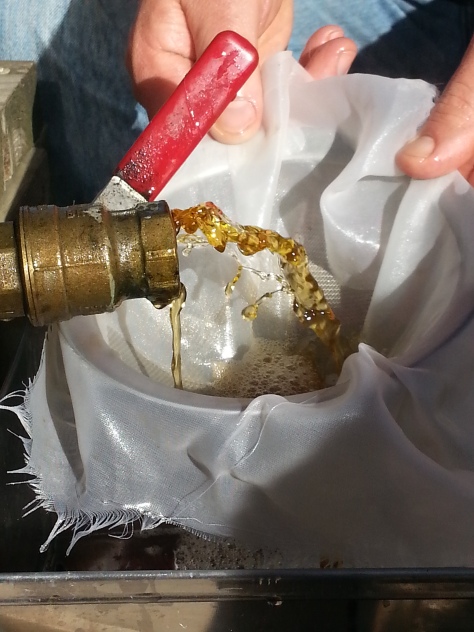
The Trees
The best trees for tapping are, of course, sugar maples – the ones that have the really brilliant colors in the fall. Other maples – red, black, silver, or even box elders – can also be used. The trees need to be at least eight inches in diameter and in good health to be tapped. Trees larger than twelve inches around can have two taps.
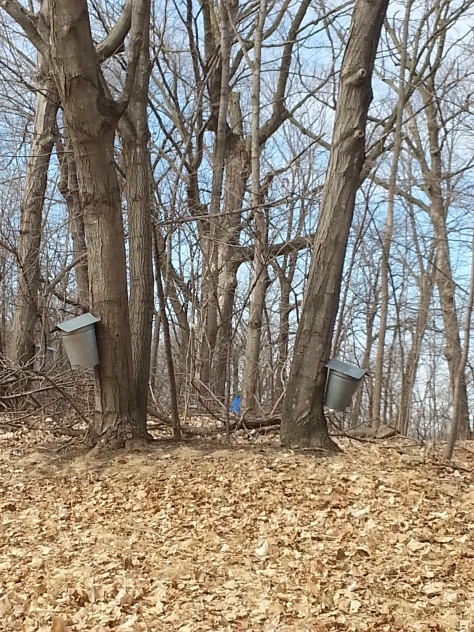
Sap
Sap is produced by the xylem, or new wood, in the tree. The purpose of the xylem is to transport water and nutrients throughout the tree. During winter, trees store starches in their roots by converting them to sugars. Once things start to thaw out, the tree absorbs moisture and dissolves the sugars, forming sap. When the nights are below freezing and the days are above it, the sap migrates up to the branches and we can tap it, starting syrup season. The season ends when the trees bud and the sugar concentration in the sap changes.
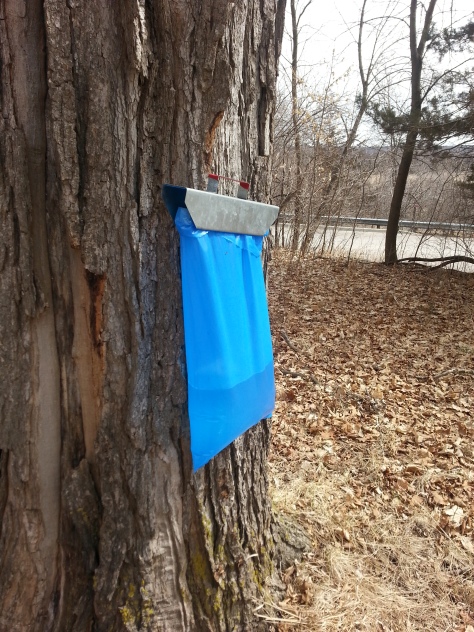
Tapping
Tapping is done with a drill and a spile. A new hole is drilled each year, then washed out and given a spile. At the farm we hang buckets or sap bags from the spile, but large operations can use vacuum tubing for more efficiency.
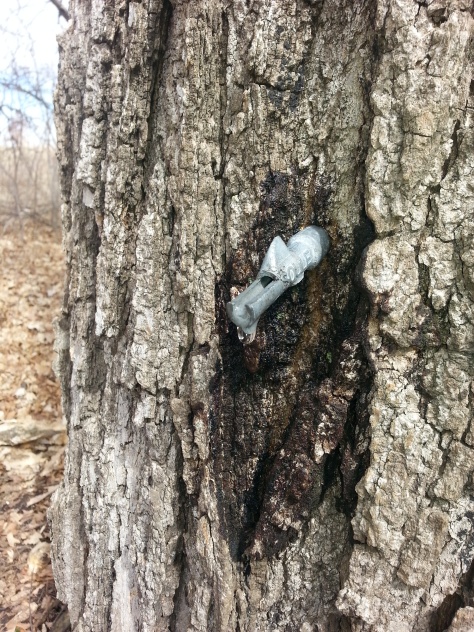
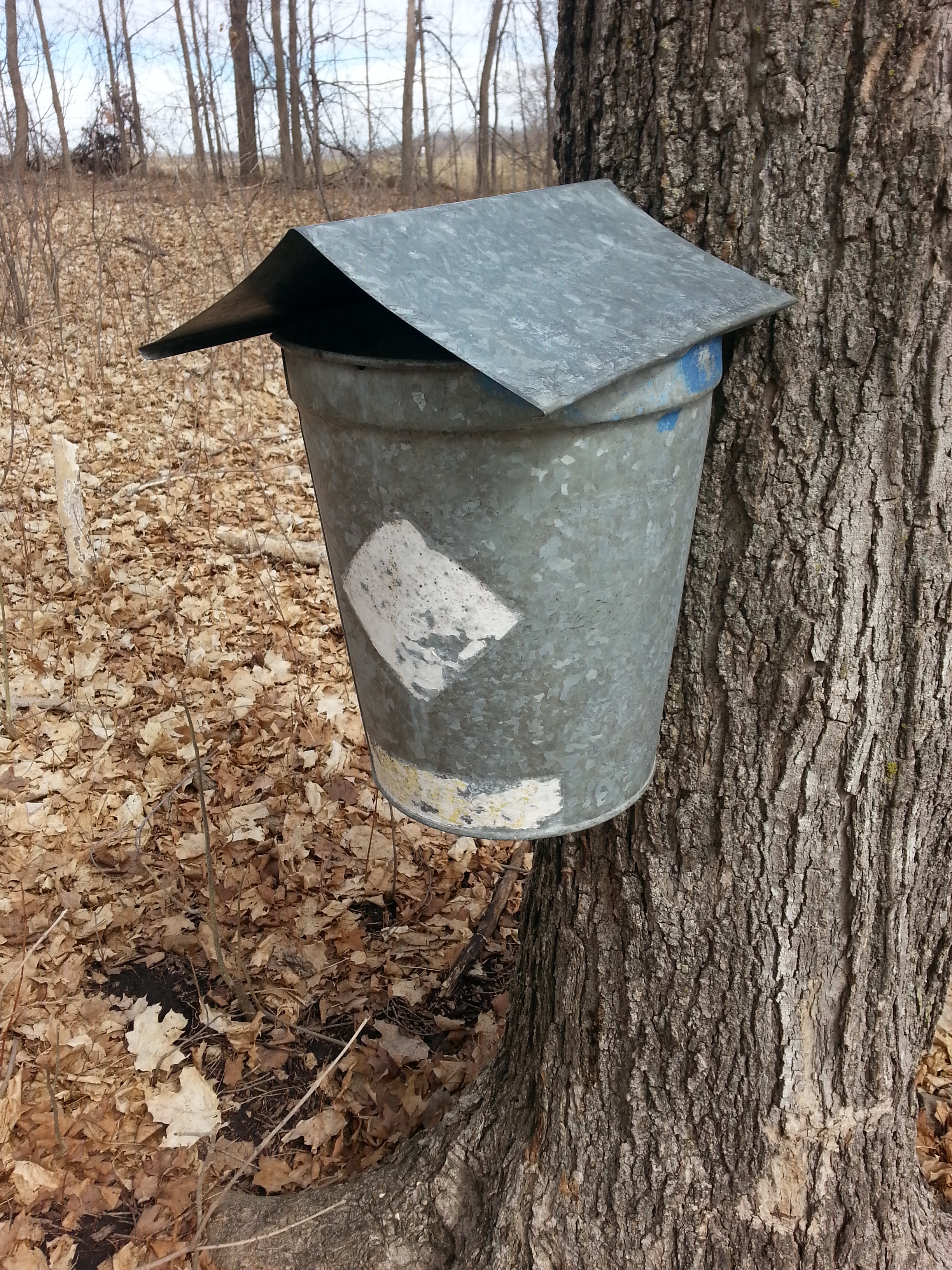
I like our method better – the vacuum tubing makes the woods look like some sort of bad science fiction set. Anyways, as the sap drips into the bucket or the bags we go around collecting it, usually in larger buckets, then filter it before adding it to the evaporator. Ideally, collection is done at least once a day, since the sap can go moldy if you let it sit.
Gross.
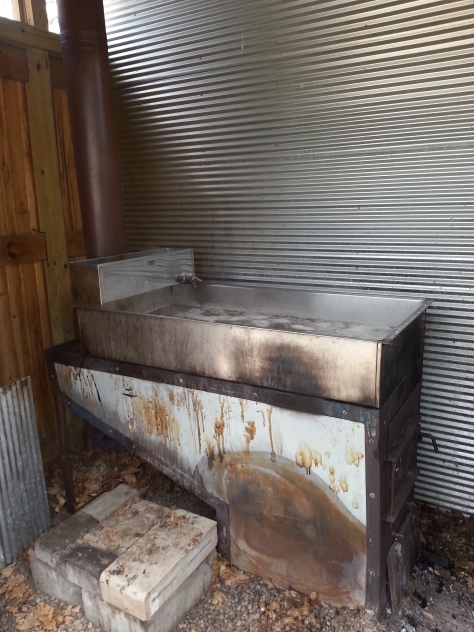
Evaporating
It takes about forty gallons of sap to make one gallon of syrup. Think about that – a forty to one ratio. No wonder real maple syrup is so expensive!
We bring the sap to our sugar shack and filter it before adding it to the evaporator. The evaporator is basically just a big metal tub with a tap set on top of a big wood burning stove. We save the ashes from the stove and put them around tomatoes and eggplants to keep bugs away during growing season.

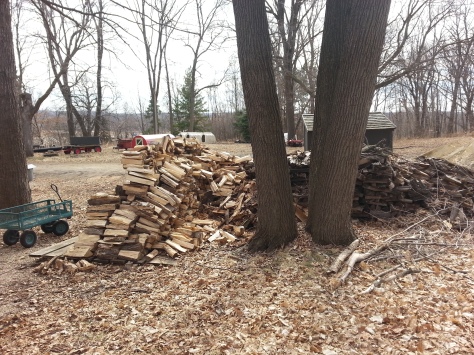
Some evaporators are much fancier, with shaped bottoms, seals, and pressure gauges that automate the process. Sometimes we put another smaller tub on top for more filtration, but not always. We also have a smaller propane fired evaporator for finishing the syrup, since the big one can burn the syrup in the blink of an eye if you aren’t paying attention.
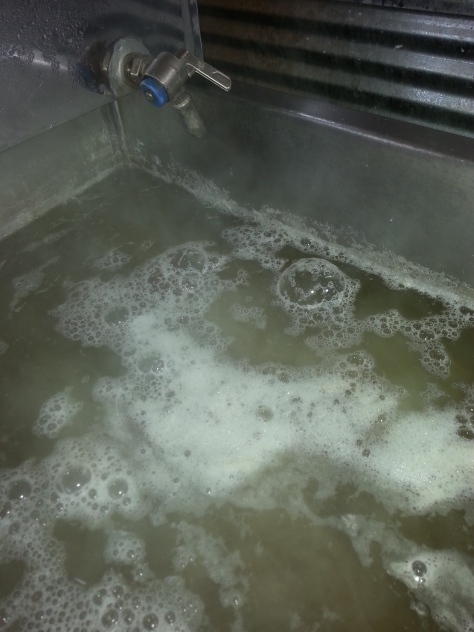
The sap is boiled until it reaches the right density – we use a hydrometer to test it. Once it reaches 66° on the Brix Scale, it’s done! Kill the heat and it’s onto bottling!
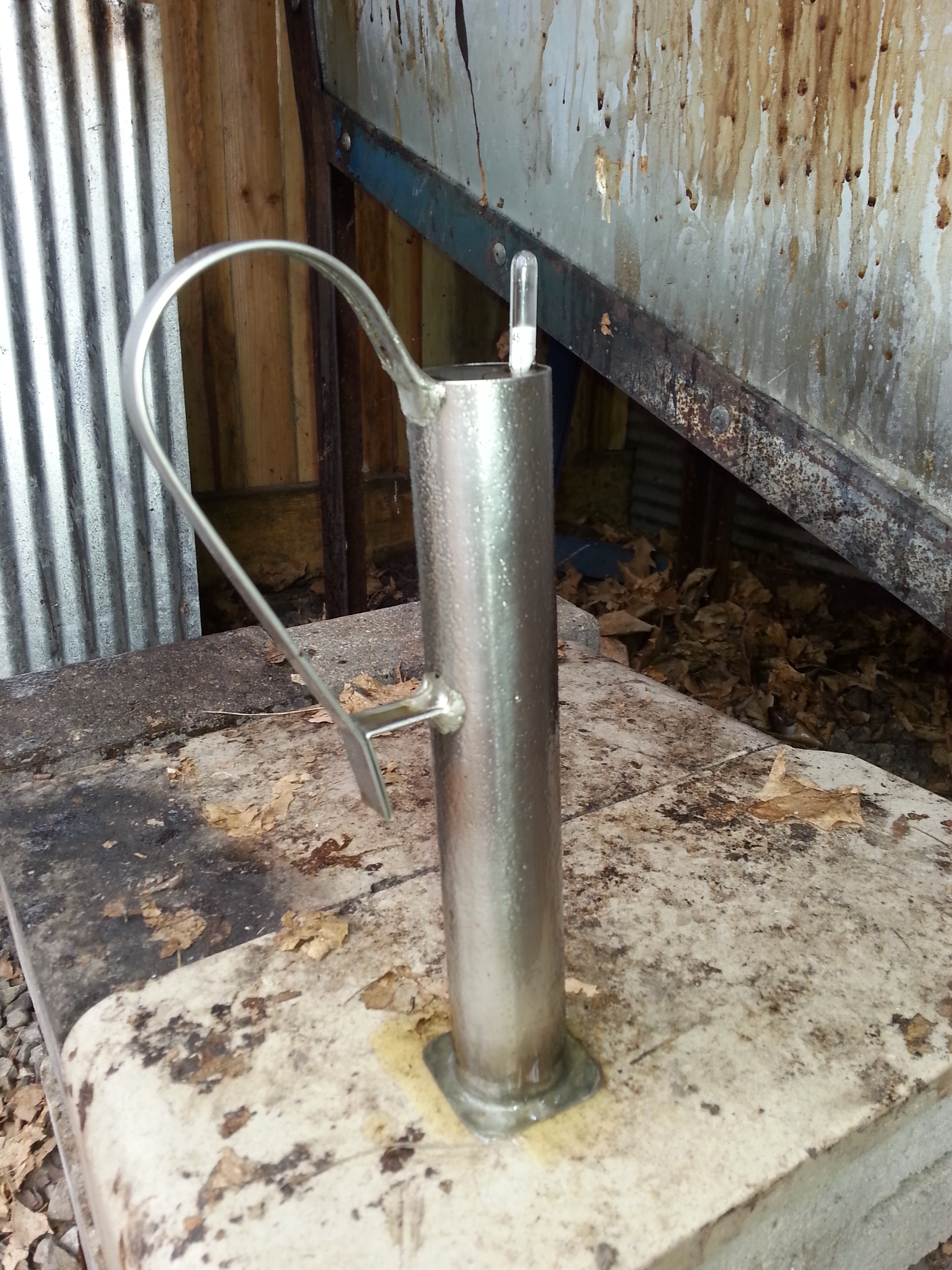
Bottling
Once it reaches the correct density, we drain the syrup off into a smaller pan with a filter. The really, really hot (don’t touch it – it’ll burn you!) goes through a filter in the pan, then through a cheesecloth filter and into the bottle. The bottles are sealed and voila! The syrup is now ready for the market. Pretty cool, right?
I think so.
So, back to syrup itself – maple syrup has a cool and complicated history. It was first made by indigenous peoples in the northeastern part of North America. Why northeastern? Temperature – it has to freeze at night for the sap to run. The indigenous peoples concentrated the sap by putting hot stones into buckets of sap to heat it, or allowing it to freeze overnight and getting rid of the water that froze on top. When Europeans arrived, they boiled the sap in large kettles over a fire. The first evaporator was patented around the time of the Civil War.
A couple of interesting facts –
Most of the world’s maple syrup comes from Canada. The other major source is the United States.
Abolitionists tended to use maple syrup and maple sugar over cane sugar, as cane sugar in the United States was usually produced using slave labor.
During World War Two, cane sugar was rationed and families were urged to use maple syrup and sugar instead, and to produce their own if they lived far enough north. Recipe books were even printed and distributed to help families make the switch.